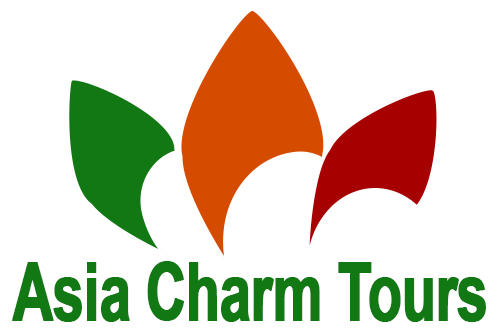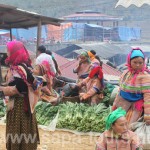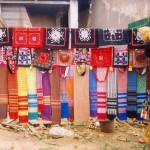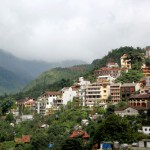Handicraft of Sapa
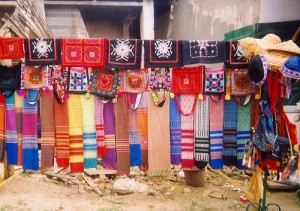 In Sa Pa, clothes, basketwork, metal and wooden objects, jewellery, pottery, etc, were made locally according to techniques that were often specific to an area or an ethnic group. These objects are still made today for family use and occasionally offered for sale.
In Sa Pa, clothes, basketwork, metal and wooden objects, jewellery, pottery, etc, were made locally according to techniques that were often specific to an area or an ethnic group. These objects are still made today for family use and occasionally offered for sale.
– Fibres: hemp, cotton and silk dyed with natural dyes
The Tày grow cotton, spin it, weave it, and dye it to make the traditional blankets for the wedding dowries. The Hmong grow hemp and use its strong fibres to make their clothes, which they dye with indigo. In certain villages, people raise silkworms to make the beautiful silk thread they use to embroider their clothes. The Dao (Mien) women and the Hmong make veritable pictures with their incredibly precise embroideries. Lots of traditional fabrics can be found in the SaPa and Bac Ha ethnic markets. Most of the patterns embroidered by the Hmong and the Dao or woven by the Tay and the Thai carry a meaning. They often symbolise a baby, a tree, a bird, a snail, the moon, etc.
– Basketwork: from forest to kitchen
Rattan and bamboo are the raw materials used for basketwork. Each ethnic group and each area has its own techniques and own patterns. The Tays’ are square-shaped, often decorated with floral patterns, while the Dao’s (Mien) and the Lao’s are raised designs with colour strokes.
For their domestic use, the Nung and the Tay make very fine baskets for sorting rice or legumes. In order to protect them, they store them over the wood fire where the smoke makes them more resistant. The Vietnamese shoulder piece is the most popular carrying device in the lowlands, while the back-basket is found everywhere in the mountains.
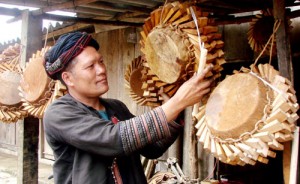 – Wood, steel and silver: traditional skills, still unrecognised
– Wood, steel and silver: traditional skills, still unrecognised
Thanks to the wide diversity of wood species and to the carpenters and joiners’ know-how, the houses, furniture and all the wooden objects are still made locally. One of the most famous wood species in the Lao Cai area is peumou (Fokienia Hodginsii), a species of slow-growing cypress whose wood is rot-proof. Chinese buyers have been paying a heavy price for it for over a century.
Using reclaimed materials, blacksmiths used to make ploughshares, knives and trivets. Despite the competition of industrial products, the high-quality knives and pruning knives made by the Hmong are still much sought-after by farmers from all ethnic groups.
Silver jewellery is still made by numerous ethnic groups. The Hmong from SaPa and the Dao are renowned for their necklaces consisting of several silver circles put together – the weight of the jewel is also a wealth and status symbol as silver metal used to be one of the main ways of hoarding wealth. The Tày from Văn Bàn make beautiful silver bangles. Depending on the area and on the subgroups they belong to, the Hmong and the Dao are distinguished by the shape of their earrings.
– Incense
Virtually all ethnic groups produce their own particular sort of incense. The Tày from Van Ban (Văn Bàn), use powdered cinnamon bark to make a brown incense with a warm, sweet fragrance. The Pa Zi from Muong Khuong make pale green incense out of powdered wild leaves, whose fragrance is greener and a little sharp. The Hmong from Bac Ha gather tree bark to make ochre-coloured incense with a powerful scent.
Also see:
- Sin Chai village
- Tram Ton Pass
- Ta Van Village – A pure gem of Sapa
- The Nung and Tu Si house with tranditional baked clay roof tiles
- Beauty of mist in Ham Rong Mount
- Church singing in early spring in Ta Phin
- Sour noodle soup – Upland unique cuisine in Sapa
- Story about unique horse-drawn carriage in Bac Ha
- Bird Market in Muong Khuong village
- Plum flowers blossom in Bac Ha during February.
- Sapa Pau Play Day Cake
- Salmon in Sapa


